KAZA – Southern Africa’s conservation wonderland awaits
Welcome to the Kavango-Zambezi Transfrontier Conservation Area (KAZA), the world’s largest Terrestrial Transfrontier Conservation area with its official tourism website, Uncover KAZA. At approximately 520,000 km², it’s larger than Germany and Austria combined, roughly the size of France, and nearly twice the size of the United Kingdom – it’s enormous! In 2011 Angola, Botswana, Namibia, Zambia, and Zimbabwe banded together, in a unique collaboration, to establish KAZA; with the goal of conserving some of Africa’s wildest expanses, protecting its wildlife, promoting tourism, and improving the well-being of local communities.

The KAZA region includes 36 protected areas, game reserves, forest reserves, game management areas, communal lands, and conservation and tourism concessions. Some of its best-known spots are Botswana’s Chobe National Park, Zimbabwe’s Hwange National Park, Zambia’s Kafue National Park, and of course, the jewels in the KAZA crown, the Okavango Delta and the awe-inspiring Victoria Falls, a World Heritage Site and one of the seven natural wonders of the world. KAZA is also home to some of the continent’s most incredible wildlife – cheetahs, wild dogs, leopards, lions, rhinos and giraffes, plus the greatest concentration of free-roaming elephants anywhere.
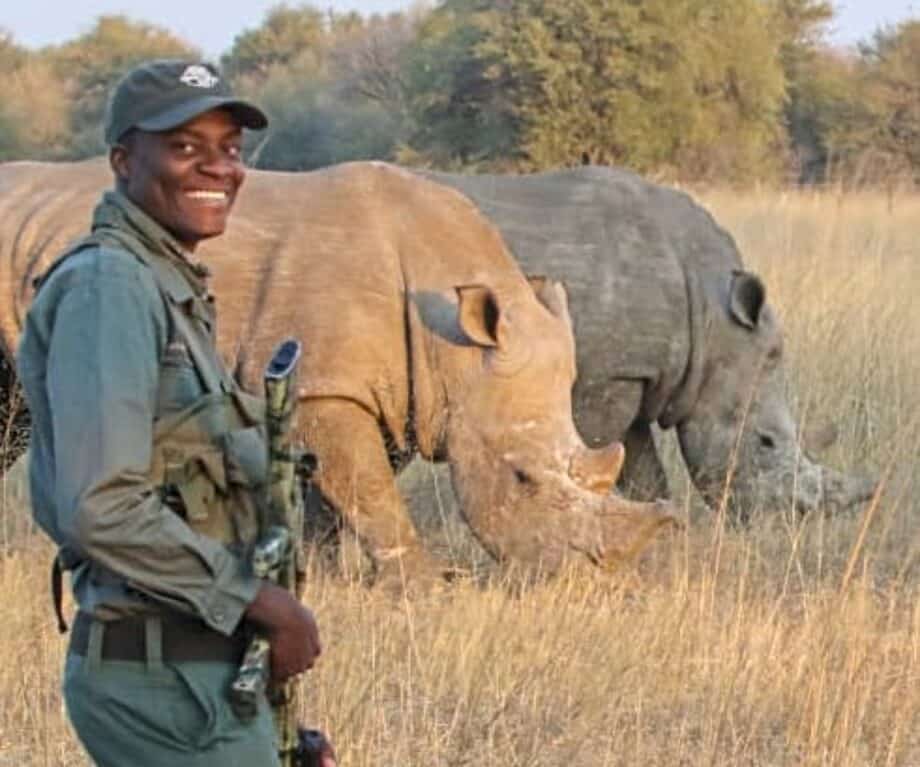
Travelling to some of the many fabulous wildlife destinations within the KAZA area not only promotes conservation but also puts money directly into the local communities, all with the added bonus of giving you some truly amazing experiences. Let me point you in the direction of some of my personal highlights of the region, why you should visit them and where you should stay while you’re there.
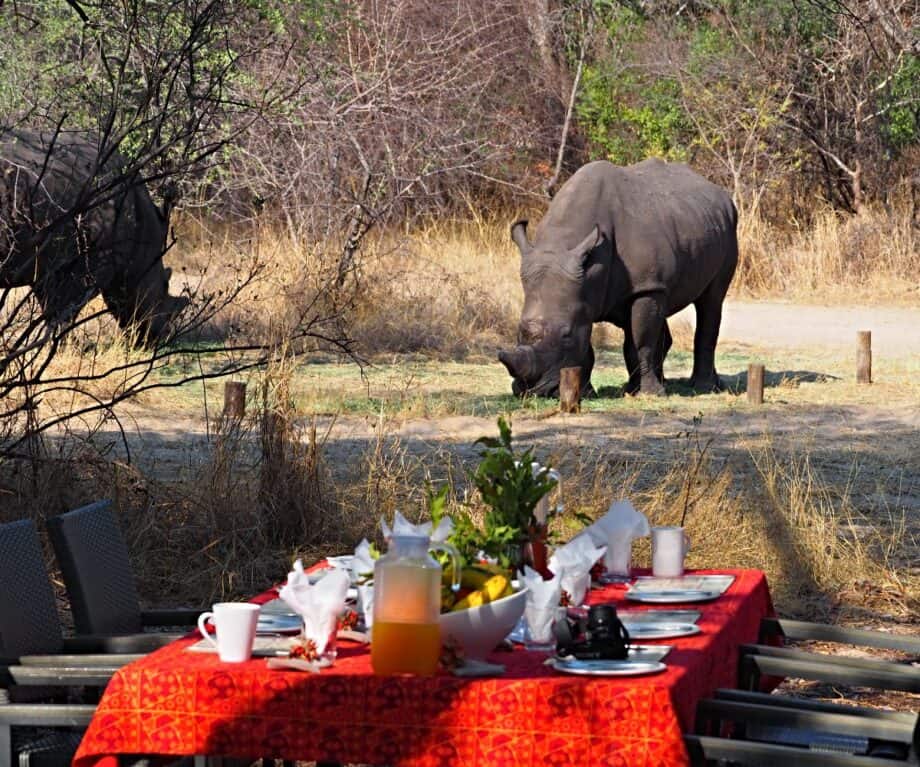
Hwange National Park, Zimbabwe
Hwange National Park, with a size of 14,650km², is Zimbabwe’s largest National Park and one of the world’s last great Elephant sanctuaries. Hwange is known for some of the densest concentrations of wildlife in Africa and has more animals and a greater variety of species, 107, than any other park in the country.
Imvelo Safaris offer four special camps in and around Hwange National Park. Small and personal camps, that not only offer the usual array of game drives, night drives and safari walks, but also give guests the opportunity to interact with the local community. Imvelo’s goal is to help the local people by ensuring that they benefit directly from visitors to their safari camps.

In a beautiful forest, adjacent to Hwange National Park’s Ngamo Plains, is Camelthorn Lodge. The lodge was built by the community, on community land, and is one of the largest community-based tourism projects in Zimbabwe. An ancient Camelthorn tree is at the centre of the property, surrounded by the main lodge and eight villas. There are two particular highlights when visiting Camelthorn, one is their rhino sanctuary and the other is visits to the local community.
Imvelo have successfully reintroduced white rhino back to Hwange, after an absence of 15 years. The project, Community Rhino Conservation Initiative, is unique in that where most rhinos in the world are held in protected National Parks or in private hands, these rhinos have been brought to a small sanctuary, on community-owned land that was voluntarily donated by villages. Lodge guests can spend time on foot with these rhinos and the well-trained Cobra Rangers, community scouts, who guard the rhinos 24/7. Guests can also experience glimpses of local village life, including visits to the nearby primary school and the local clinic, both of which benefit directly from Imvelo’s tourism-driven philanthropy.

Victoria Falls, Zimbabwe
The spectacular Victoria Falls, the world’s greatest sheet of falling water, is located midway along the course of the Zambezi River, which forms the border between Zambia and Zimbabwe. At 1,708m wide and with a drop of 108m, this is the largest uninterrupted curtain of falling water in the world.

The quintessential place to stay when visiting the Victoria Falls in Zimbabwe is The Victoria Falls Hotel, Zimbabwe’s grandest and oldest luxury hotel. Set in lush, tropical gardens overlooking the magnificent falls, the hotel offers authentic Edwardian luxury, within walking distance of The Victoria Falls rainforest, and is in an ideal location for river cruises, helicopter tours and safaris.
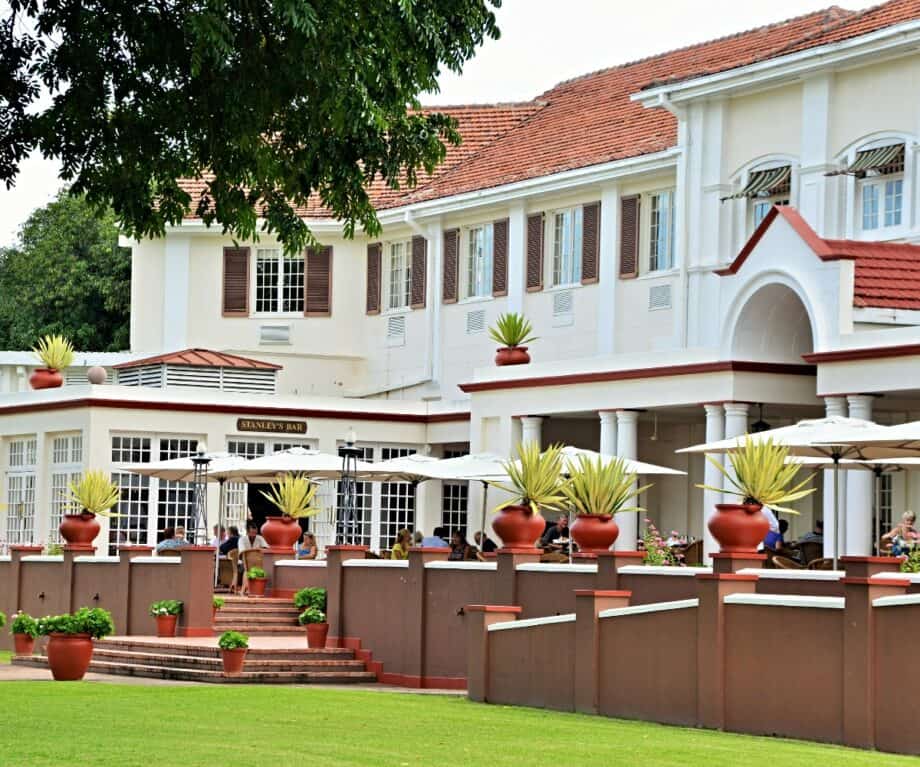
If you are looking to add a conservation element to your Victoria Falls visit, drop in at the Victoria Falls Wildlife Trust for a 1-hour tour of their Wildlife Rehabilitation Centre and Laboratory facilities. Victoria Falls Wildlife Trust are called in cases where wildlife has been injured or orphaned, due to human interference or conflict. They assist by taking care of the animal until it’s recovered and ready to be released back into the wild.
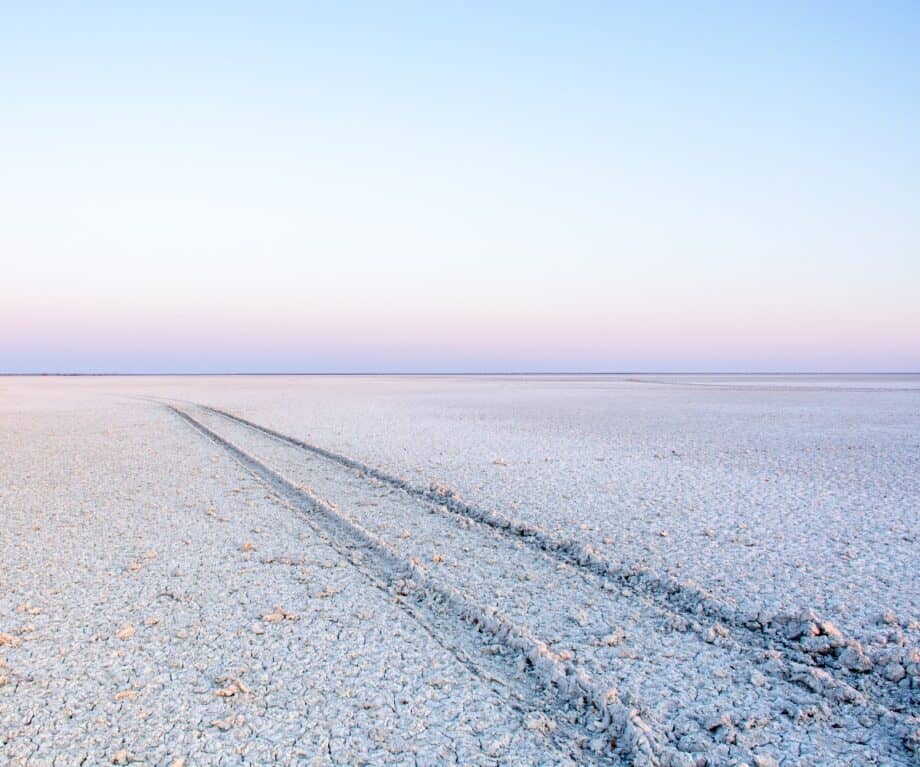
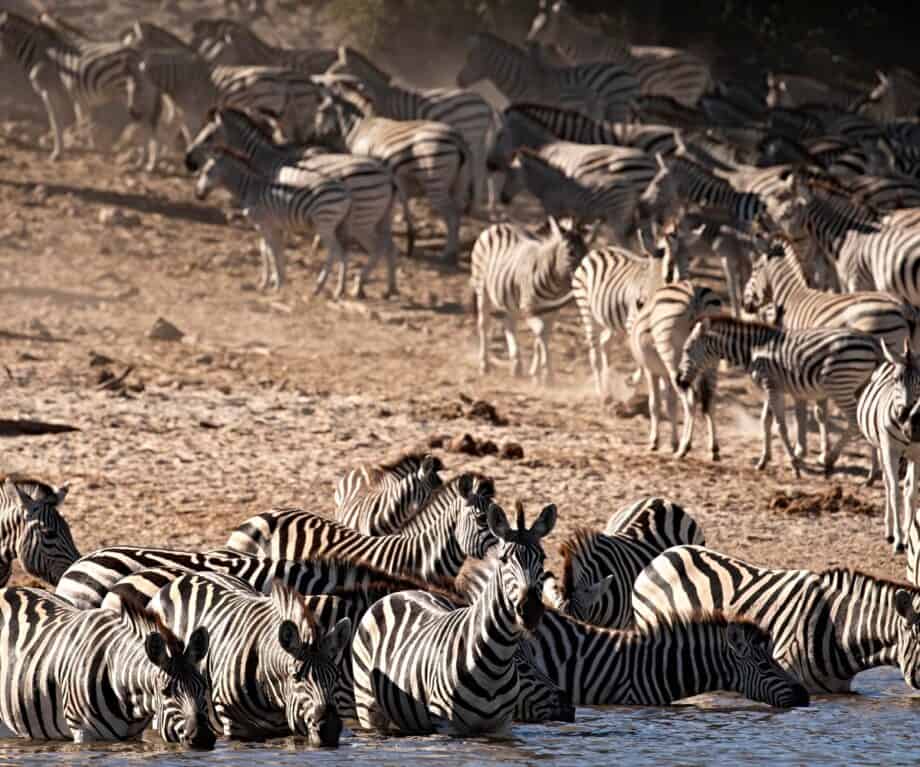
Makgadikgadi Pans, Botswana
Covering over 9,942 m², the Makgadikgadi Pans are the largest salt pans in the world. Visible from the moon, this is a vast sea of white that was once the centre of an ancient super lake, that covered an area larger than Switzerland and evaporated many millions of years ago. The pans are a network of shimmering white flats during the dry season, but during the wet season, the pans fill with water and attract large numbers of zebra, springbok and wildebeest, followed closely by predators, making for fantastic game viewing. The pans are the world’s biggest breeding site for greater flamingos and home to one of Africa’s largest zebra populations.
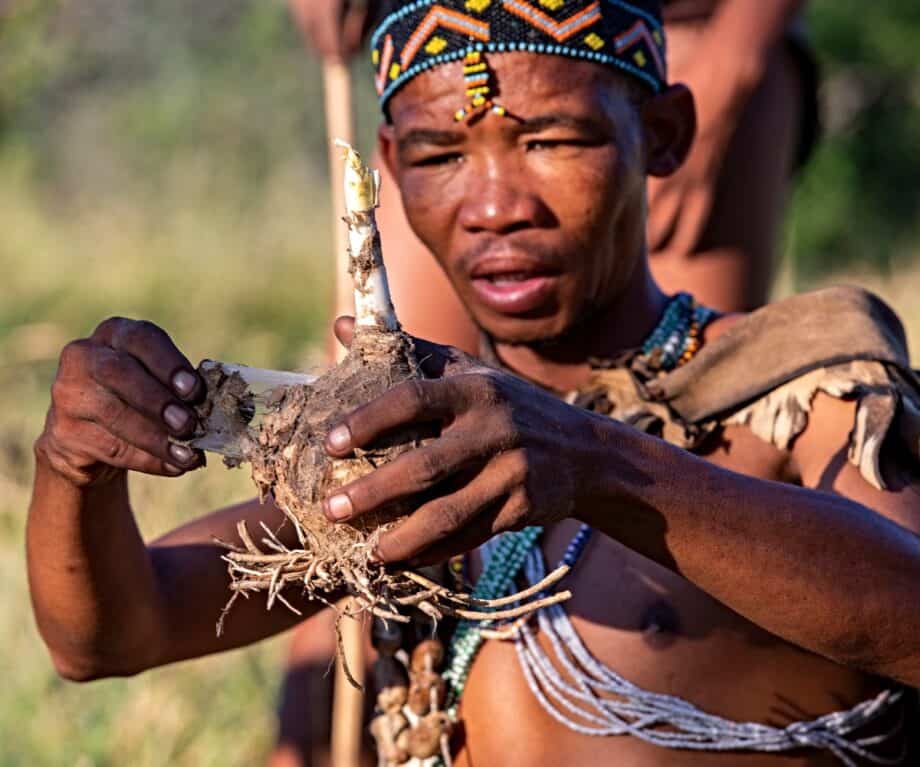
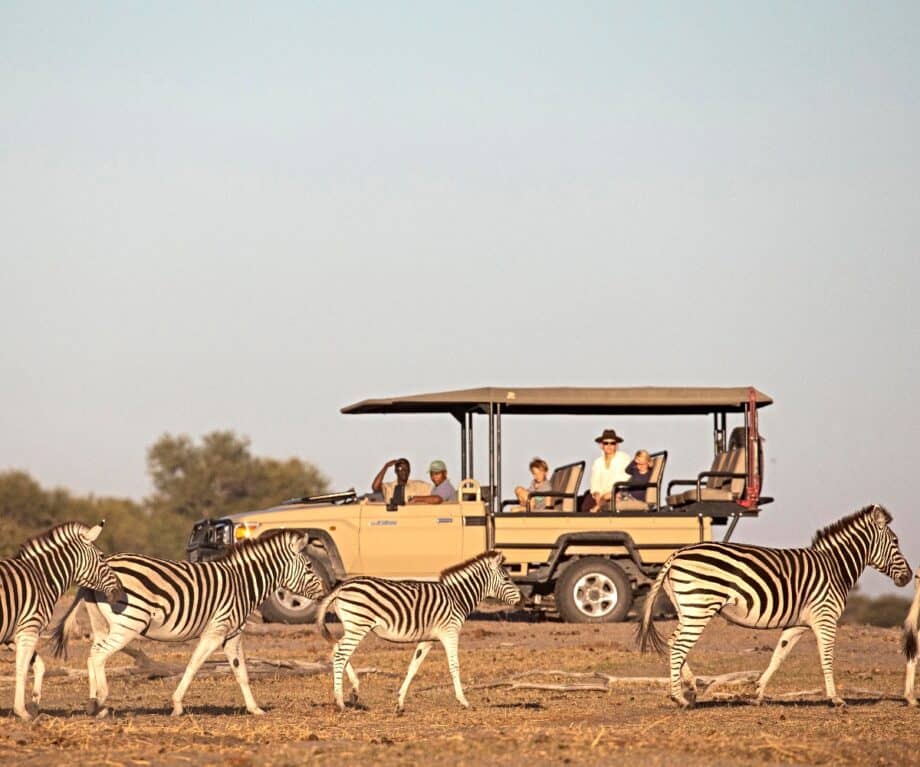
During the wetter months (December – March) rains completely transform the Makgadikgadi Pans. Lush grasses absorb nutrients from the pans, enticing Africa’s second-largest zebra migration to head west from the Boteti River in search of fresh grazing. They are followed closely by predators! One of the best places to see this is at Meno a Kwena, a hidden gem of a camp, perched on a clifftop above the Boteti River. The zebra migration is resident here for much of the year, and in the dry season, when there’s is no other water around, the river is a magnet for wildlife. There are also opportunities for guided walks with local San bushmen, which is a fascinating way to learn about their culture, traditions and phenomenal knowledge of the bush.


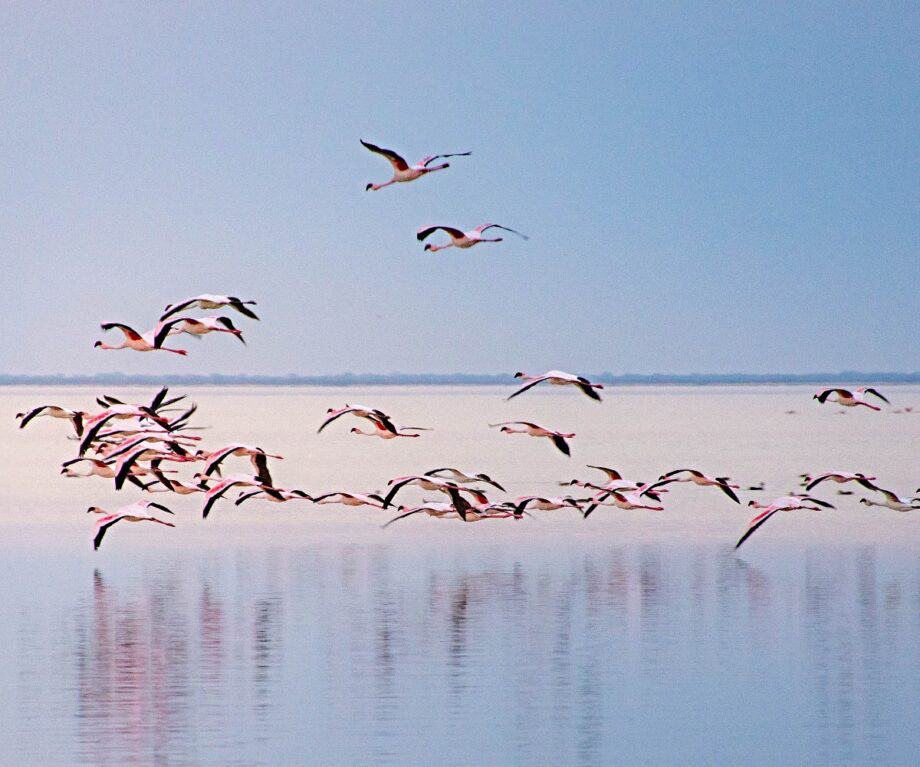
For keen bird watchers, the winter, wetter months in the Makgadikgadi Pans are also a great time to see flamingos, who migrate to the pans to feed, mate and nest. The Nata Bird Sanctuary, in the extreme northeast of Sua Pan (part of the Makgadikgadi network), is the perfect place to see them. The bright pink flamingos provide a stunning contrast to the saltwater lake and the area is recognised as one of the most important flamingo breeding grounds on the continent. This 230km² community-run wildlife sanctuary was formed when the local people voluntarily relocated their cattle and established a network of tracks through the northeastern end of the pan. The sanctuary’s principal draw is the birdlife, with 165+ species having been recorded here, but it also protects antelope, zebras, jackals, foxes, monkeys and squirrels. Nata Lodge is the place to stay when visiting the bird sanctuary and a guided tour in one of Nata Lodge’s open vehicles into the bird sanctuary is not to be missed.


Everything you need to plan your trip in 2024
🌟 Luxury hotel deals from Booking
🏡 Vacation rentals from VRBO
✈️ Flights from KIWI
🛫 Private jets from Private Jet Finder
🅿️ Airport parking from ParkVia
🛋️ Airport lounges from Priority Pass
🚖 Airport taxis from Welcome Pickups
🚫 Flight cancellation help from AirHelp
🚗 Car rentals from Discover Cars
🚐 Luxury RV rentals from RVshare
🚴 Two-wheelers from BikesBooking
🚅 Trains from Trainline or Rail Europe
🚢 Cruises from Cruise Direct
⛵ Yacht charters from SeaRadar
🛥️ Ferries from Direct Ferries
🎫 Attractions tickets from Tiqets or Klook
🎭 Events tickets from Ticketmaster UK
🏞️ Tours from Viator or GetYourGuide
🌮 Culinary experiences from Eatwith
🏖️ Packages from Expedia US/CA or UK
🛡️ Travel insurance from Safety Wing
🏥 Medical insurance from World Nomads
📸 Vacation photos from Flytographer
🧳 Luggage from Case Luggage
🛅 Luggage storage from Stasher
📚 Travel guides from Lonely Planet
🗺️ Books and maps from Barnes & Noble
📕 eBooks from Kindle Unlimited
🎧 Audiobooks from Audible
🎬 Movies from Prime Video UK
🎵 Music from Amazon Music UK
💶 Travel currency from Wise
📱 SIMs from SimOptions
🌐 VPNs from ExpressVPN or NordVPN
🛂 Visas from iVisa
💸 Earn with Travelpayouts
📨 Seen a broken link? Please contact us!
Bwabwata National Park, Namibia
Only relatively recently recognised as a national park, Bwabwata was established to rehabilitate local wildlife populations. The park borders the Okavango River to the west, Angola to the north, the Kwando River to the east, and Botswana to the south. Prior to the signing of cease-fire in 2002, at the end of the Angolan Civil War, this area was rarely visited, and wildlife populations had been virtually wiped out by rampant poaching. Wildlife is now making a slow but spectacular comeback. Though wildlife numbers are steadily recovering, a visit here is more about escaping the well-trodden tourist trail, than wildlife viewing. Bwabwata is a bird lover’s paradise, recognised internationally as an Important Bird Area and supporting several threatened and endangered bird species.

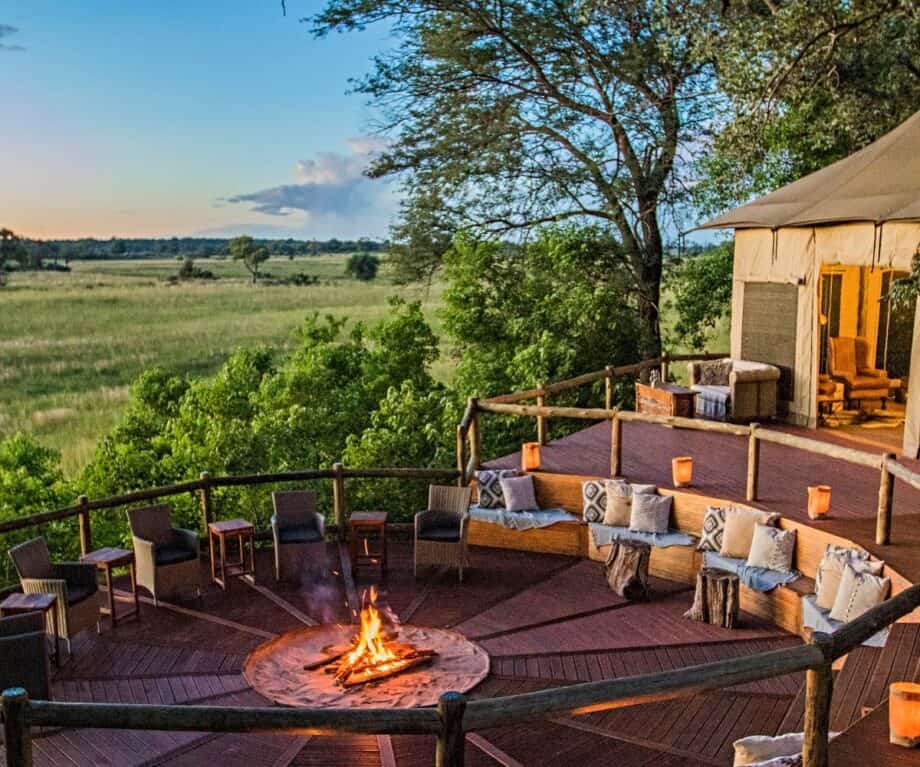
The ten suites at Nambwa Tented Lodge are built on stilts, among the tree tops. At the heart of the lodge, is a majestic viewing deck for dining under the stars and looking out over the floodplains below. Near the lodge is the Sijwa Project. Part cultural village, part artisanal skills training centre, part organic permaculture nursery, and part upcycling programme producing fabulous arts and crafts, including recycled glass beads and stylish sewn items, that are all available to purchase.
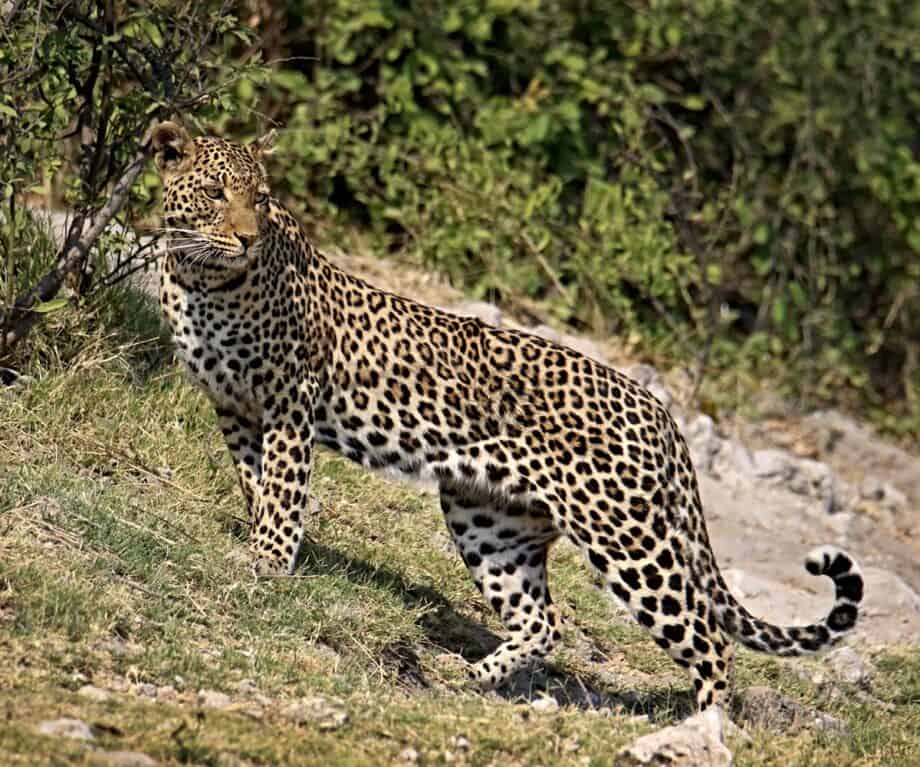


Kabulabula Conservancy, Namibia
In 1996, in a move to empower local people to manage and benefit from their natural resources, while giving wildlife populations a chance to recover from the poaching of the past, the Namibian government granted communities the right to create communal conservancies. Today Namibia’s 87 conservancies cover nearly 168,000km², around 20% of the country, and directly employ thousands of people. Recovering wildlife numbers in these areas have also contributed to a tourism industry that generates more than 14% of Namibia’s GDP. The 90km² Kabulabula Conservancy is a perfect example of this. Situated on the Namibian banks of the Chobe River, opposite Botswana’s Chobe National Park (guaranteeing year-round game viewing), Serondela Lodge was constructed using eco-materials and methods. The lodge is a joint venture between the community and the Micheletti family, who were already operating with 2 other lodges elsewhere in Namibia. Guests staying here are creating employment, promoting conservation and making a positive, direct and sustainable impact on the local community.

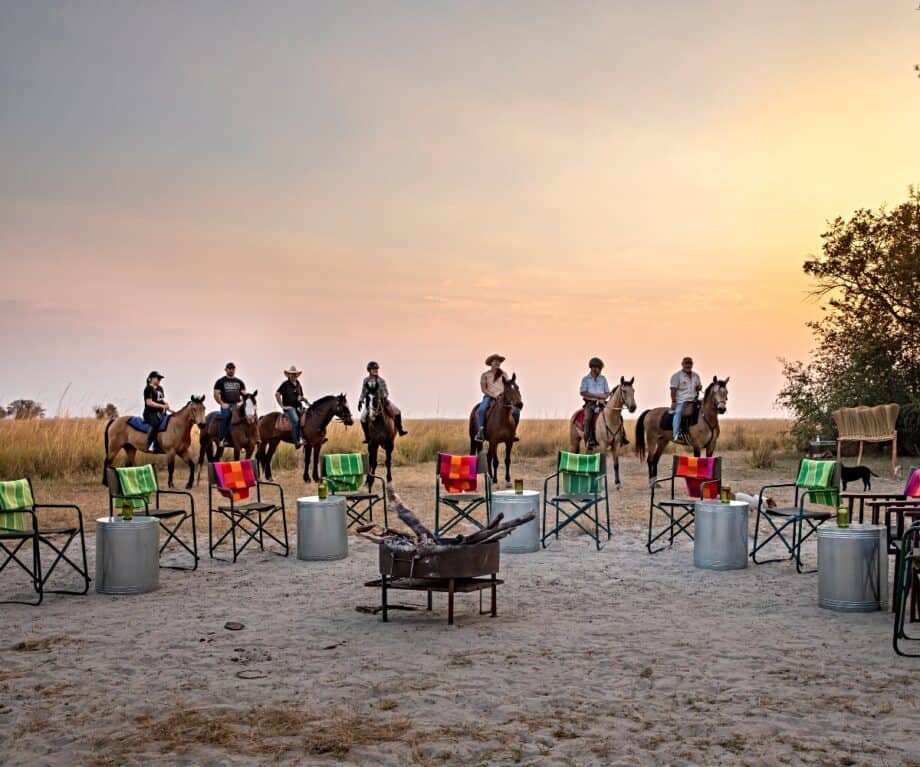
Simalaha Community Conservancy, Zambia
In 2012 elders of the local community decided that 1,800km² of their communal land should be developed as a wildlife conservancy, protecting the area as well as promoting income generation through tourism. In 2013, supported by Peace Parks Foundation, a wildlife sanctuary measuring 200km² was established inside the Simalaha Conservancy. The first wildlife translocations took place in 2013 and since then, more than 3,000 animals have been rewilded there, including eland, sable, waterbuck, roan, buffalo and giraffe.


A really special way to experience the conservancy is with Zambia Horseback Safaris which runs riding safaris in Simalaha. Home to 16 large mammal species, but no large predators, the area offers great horseback safari adventures, suitable for any level of horse rider. For experienced riders, the terrain is perfect for long canters and wildlife sightings from horseback. It’s also great for families or those who want to experience a horse safari for the first time.
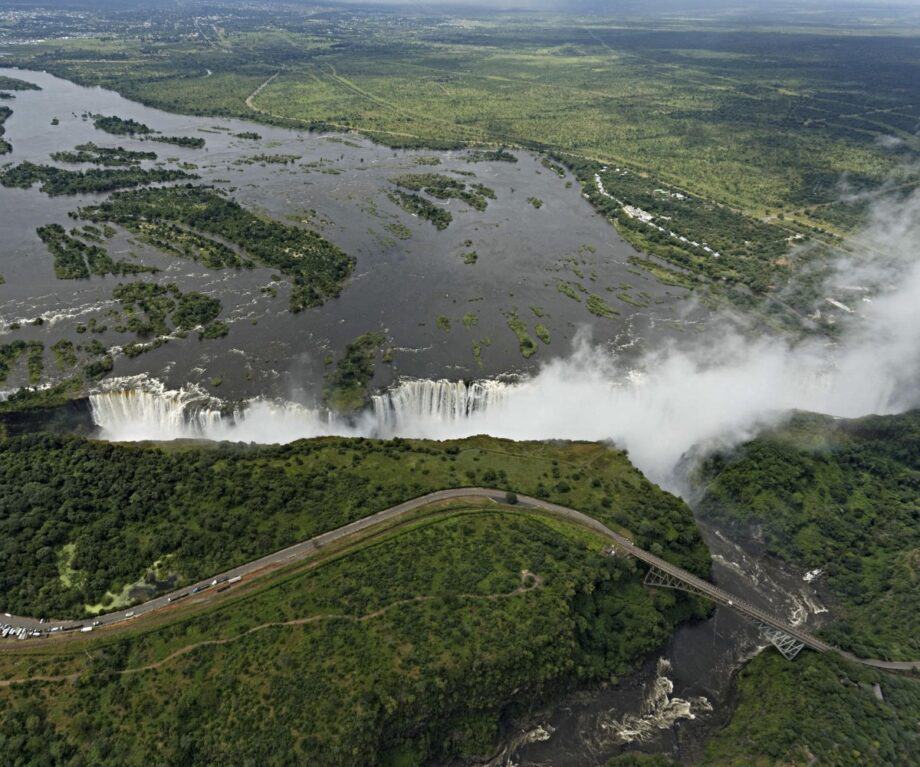

Livingstone, Zambia
The proximity of the Zambezi River and the spectacular Victoria Falls makes Livingstone a hub for visitors from all over the world. 11km from the falls, Livingstone is quieter and less ‘touristy’ than Victoria Falls Town in Zimbabwe and is known for its range of adventure activities, from white water rafting to helicopter flights and plenty more!
Devil’s Pool, adjacent to the famous Livingstone Island, is situated right on the edge of the falls. Visitors to Livingstone Island can swim right to the edge of the falls if they are feeling brave, though you do need to be relatively fit, steady on your feet, and a confident swimmer.


Just upstream of the falls is the lovely Radisson Blu Resort Mosi-oa-Tunya. The hotel’s rooms have private balconies and patios that overlook the Zambezi River and you can pamper yourself with a visit to the spa, a swim in one of the 2 outdoor swimming pools, a sunset cruise, or just relax in one of the resort’s bars or restaurants.
Local non-profit CATS (Conservation & Tourism Society) focuses on bridging the gap between local communities and local wildlife. Their team of 8 volunteers conduct conservation, wildlife and environmental education at a grassroots level. Livingstone has seen an increasing number of human-wildlife conflict issues as the town has expanded into traditional wildlife areas, and CATS has developed a roadshow to sensitise people on elephant behaviour and to promote safe cohabitation with wildlife.

KAZA’s diverse landscapes offer travellers an incredible opportunity to experience the natural world while contributing positively to local communities and wildlife conservation. By choosing responsible and sustainable travel, such as supporting eco-friendly accommodations, engaging in community-based tourism, and respecting wildlife habitats, travellers can leave a positive footprint and ensure that the magic of Africa’s landscapes and the welfare of its people and wildlife remains for generations to come.
Let me say, it is possible to include all my suggestions in one itinerary. I have visited all these places both individually and also in one whistle-stop tour that took in all of them in just over a week – which I would not recommend! But if you had two weeks at your disposal, you could certainly do them justice and it would be a terrific trip!
Did you enjoy this article?
Receive similar content direct to your inbox.



A timely reminder that even though I’ll soon be heading into my 5th decade I still haven’t been to Africa. That’s got to be one of my New Year’s resolutions.
Hi Jane,
That sounds like the perfect New Year’s resolution to me! 😊
Sarah
If a pictures worth a thousand words …
Such a great collection of images.
Hi Mike,
Thanks, so glad you liked the photos.
Sarah
We’re hoping to visit the Vic Falls soon. The Victoria Falls Hotel would be the place to stay. We really lap up that sort of yesteryear luxury.
Hi Janet,
The Victoria Falls Hotel is lovely, and you absolutely must have the High Tea on the Stanley Terrace while you are there.
Sarah
We have unfinished business with Africa. For our honeymoon we went on a very cheap package safari. Although we saw plenty of other safari vehicles we never saw any leopards or wild dogs. It’s getting close to a time to go back and do a safari in style, finally ticking off those leopards and wild dogs.
Hi Kev,
You must definitely come back to Africa and settle some of that ‘unfinished business’ there’s something very special about going on safari.
Sarah
KAZA’s probably flying under the radar. I can’t believe that I haven’t heard more about an area that’s bigger than Austria and Germany combined. When you think how the Kruger National Park in South Africa is a household name it does make you think that possibly KAZA would benefit from some more marketing.
Hi Charlotte,
I totally agree! Kruger has marketed itself very well indeed, and whilst there are some lovely lodges there, and the wildlife is terrific, I personally think there are a great many other parks in Southern Africa, particularly in the KAZA region that are far more beautiful.
Sarah
That first picture of the flamingoes is beautiful. It’s almost like an airport scene with the flamingoes looking like planes as they are coming into land. There are so many of them.
Hi Karen,
It’s such a beautiful site in such an amazing place.
If flamingos are your thing another great African spot to visit is Lake Natron in Tanzania. It’s the world’s largest breeding ground for lesser flamingo and there can be 2,000,000 of them!
Sarah
That was some coffee break. A whirlwind tour of KAZA whilst I enjoyed my latte. It certainly brightened up a grey December morning.
Hi Sharon,
Glad to have brought a little sunshine into your day. Hopefully you’ll come visit this part of the world some day!
Sarah
Visiting Victoria falls is one of the amazing trip one will never forget in his lifestyle, if planning to visit four country in one days then visit Victoria falls, and again driving along the hunters road between Botswana and Zimbabwe.